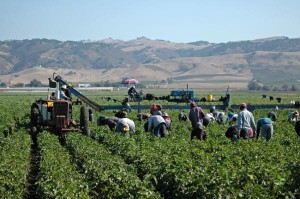 Literally millions of folks participate annually in some form of agritourism in the state of California alone. The farms and ranches that perpetuate this increasingly popular tourism niche provide a plethora of agricultural activities for visitors to enjoy, and that is exactly what keeps them coming back for more.
Literally millions of folks participate annually in some form of agritourism in the state of California alone. The farms and ranches that perpetuate this increasingly popular tourism niche provide a plethora of agricultural activities for visitors to enjoy, and that is exactly what keeps them coming back for more.
Agricultural tourism is defined as a commercial endeavor at a farm, ranch, or other agricultural institution that is intended not only for the enjoyment and/or education of visitors, but also for the gain of additional income for the owner.
A romantic getaway at a secluded ranch, a bed and breakfast at one of California’s famous vineyards, and a destination wedding in the mountains or on the coast are just some of the things bringing people into California from all around the globe. Kid-friendly activities such as corn mazes, hay rides, and fields full of farm fresh produce just waiting to be picked and enjoyed are great ways to include the entire family on an unforgettable agritourism adventure.
Agritourism also includes roadside farm stands, farmers markets, tours, classes, workshops, fairs, festivals, pumpkin patches, Christmas tree farms, “U-pick” activities (fruits, vegetables, herbs, and flowers), winery weddings, orchard dinners, historic buildings/museums, youth camps/retreats, barn dances, hunting, fishing, horseback riding, bird watching, camping/RV accommodations, guest ranches, and more.
In addition to the fruits, vegetables, and herbs commonly found at roadside stands and in farmers markets, other popular items sold by farms and ranches include jams, oils (olive, garlic, peanut, hazelnut, etc.), grass-fed beef, soap, and goat’s milk.
Moreover, on top of the profits this agritourism brings into the state, there are also many new jobs and a substantial opportunity for growth that come along with this seemingly ever-increasing trend, too. Farms and ranches see this as a way to increase both visibility and profitability. And one of the most exciting realities of agritourism is that there is literally no limit to the possibilities.
In fact, the more innovative these agritourism contributors become with their endeavors, the more unique and potentially profitable they will become. Basically, there is no recipe for success or fixed manner of creating a successful agritourism operation. Further advancement in agritourism translates to the state of California becoming more alluring as a whole.
According to the research article “California agritourism operations and their economic potential are growing”—authored by Rilla, Hardesty, Getz, and George—if you’re searching for a unique agritourism experience, then word of mouth is arguably the best way to find what you’re looking for. In addition to asking the locals what activities they suggest, you can also search for roadside signs, websites, and regional brochures—the next most popular forms of marketing according to the article.
In terms of the non-monetary benefits of agritourism, the future is something that the majority of the farmers and ranchers are considering heavily. Many contributors to the agritourism industry believe that their endeavors will greatly affect future generations in positive ways by preserving family traditions and maintaining natural wonders.

